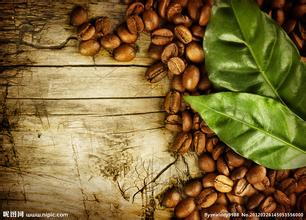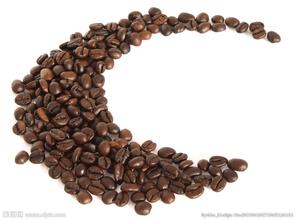Description of varieties and flavors of African coffee beans introduction to the characteristics of varieties produced by taste treatment
Description of varieties and flavors of African coffee beans introduction to the characteristics of varieties produced by taste treatment
Columbia Super Coffee (Columbian Supremo), a unique location, at the foot of the Andes (Andes), mild climate and humid air, no frost, undulating mountains provide a diversified climate and long growth cycle, resulting in its small particles, mellow taste. This coffee is medium mellow, low acidity, sweet, has the best flavor and delightful aroma. Some people say that Colombian super coffee has the strong lubrication characteristic of Sumatra Mantenin, a special walnut bitterness and nutty taste, suitable for medium roasting.
Harald, Ethiopia (Ethiopian Harrar), which has a mixed flavor, has a mellow taste, moderate or mild acidity, and the lowest caffeine content because residents still pick wild coffee, making it the most unusual and special coffee in the world. Its dry treatment gives it a unique earthy smell, and its unique primitive wild flavor is very aggressive. Suitable for shallow baking.
Kenya A.A because it is very similar to Yemeni mocha and Ethiopia, they both have a chic wine taste and a long aftertaste, but it is rare that Kenyan coffee has the mellow and smooth taste that Ethiopian coffee and Yemeni coffee do not have. it is lighter than Ethiopian coffee and more mellow than Yemeni mocha, so it is generally suitable for deep roasting.
Yemeni mocha coffee. One of the oldest coffee in the world, Yemen is at the southernmost tip of the Arabian Peninsula, and Mocha is a port in Yemen where coffee was formerly named. But now the port of Mocha no longer exists and has become a sandbar. The mocha coffee we are talking about now generally refers to coffee of similar quality, which has lost the meaning that he began to name. Nowadays, coffee in Arabian Peninsula is called mocha coffee, and sometimes Harald coffee produced in Ethiopia is also called mocha. It is characterized by fruity, obvious wine, spicy and nutty flavors. Some people also commented that the aftertaste of mocha is very similar to that of blueberries, with a strong sour taste and obvious chocolate flavor, which is suitable for deep baking, and it is said that it is best to grind and brew after baking for a day or two.
Coffee is the main cash crop in Angola, the primary export of Burundi and the largest foreign exchange earning industry in Kenya in the past. Ethiopia is known as the "hometown of coffee"; C ô te d'Ivoire occupies an important position in the world in coffee production; Uganda is famous for its production per unit area in Africa.
As the birthplace of coffee, Africa is a land full of game beans, and the continent deserves to produce some of the world's top coffee. African beans have a unique aroma, wild taste, mostly with a touch of sour red wine, such as Ethiopia's "mocha" is particularly wonderful (Hara and Tijima two producing areas with dry treatment of high-quality mocha beans, such as fruit or wine aromas, is inferior to other coffee), Yekashev coffee beans are also very good. Kenyan varieties are delicious, showing more bright and lively acidity than Arabica coffee beans in other regions. Kenya AA is a very famous top coffee bean.

Important Notice :
前街咖啡 FrontStreet Coffee has moved to new addredd:
FrontStreet Coffee Address: 315,Donghua East Road,GuangZhou
Tel:020 38364473
- Prev

Structure diagram of coffee bean structure text roaster
Coffee bean structure text roaster structure diagram selection of coffee mother tree on the fully mature, normal shape, full, the same size, with two seeds of fruit. To remove the peel of the selected fruit, you must be careful to prevent damage to the seeds and affect the germination rate, and then put the peeled seeds in a ventilated and cool place to dry. The seed shell can be whitened and the seeds can not be exposed.
- Next

Description of Flavor of Flower Butterfly Coffee Flavor treatment method Grinding scale of production area
Description of Flower Butterfly single Coffee Flavor: floral aroma, bergamot, berry, Nanyang fruit, honey, cherry, long-lasting aroma and finish, clean and layered taste, there are many ways of acid washing, but generally speaking, the floating beans are removed after the coffee fruit is picked, then the pulp is removed, and then the coffee beans are soaked in the fermentation tank.
Related
- Guji coffee producing area of Guji, Ethiopia: Humbela, Shakiso, Wulaga
- What is the most expensive variety of Qiloso in BOP multi-variety group?
- How to store the coffee beans bought home?
- Why are Yemeni coffee beans so rare now?
- Ethiopian Sidamo all Red Fruit Sun Sun Santa Vini Coffee beans
- SOE is mostly sour? What does it mean? Is it a single bean? what's the difference between it and Italian blending?
- Is Italian coffee beans suitable for making hand-brewed coffee?
- How to choose coffee beans when making cold coffee? What kind of coffee beans are suitable for making cold coffee?
- Just entered the pit to make coffee, what kind of coffee beans should be chosen?
- Can only Japan buy real Blue Mountain Coffee? What are authentic Jamaican Blue Mountain coffee beans?

